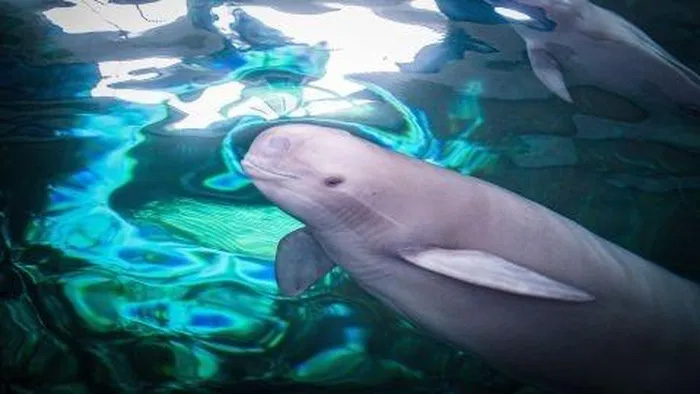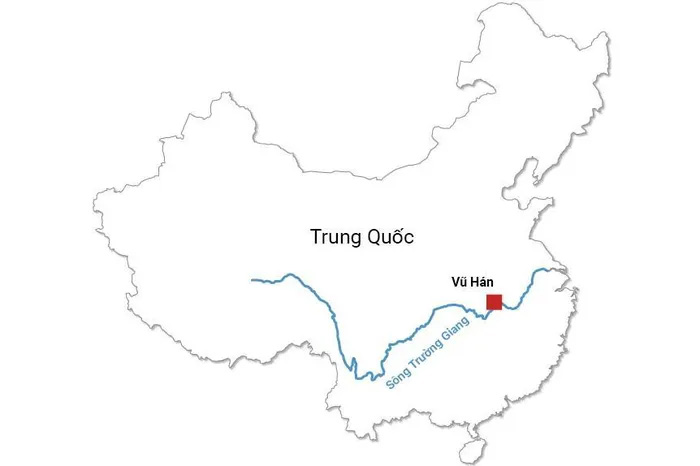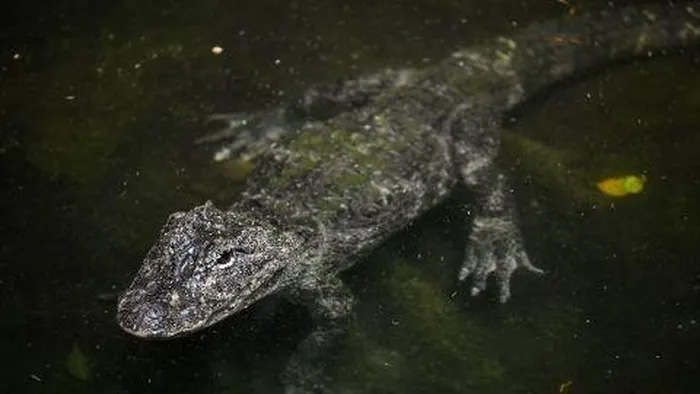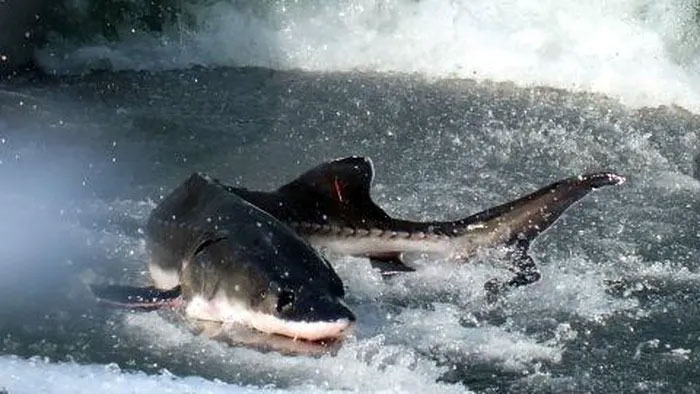Due to the impacts of climate change and human activities, the rare white-flag dolphin – dubbed the ‘Goddess of the Yangtze River’ – is on the brink of extinction.
The white-flag dolphin – known as the “Goddess of the Yangtze River” – is such a rare species that it is believed to bring good fortune and protection to local fishermen and all those fortunate enough to see it.

White-flag dolphin.
However, overfishing and human activities have pushed them to a high risk of extinction. It has been many years since anyone has seen them.
Samuel Turvey, a British zoologist and conservationist who has spent over 20 years researching in China, stated: “The Yangtze river dolphin is a unique and beautiful creature.”
“The Yangtze river dolphin belongs to its own family of mammals and has existed for tens of millions of years. Although there are many other river dolphin species worldwide, this one is so distinct that it has no relation to any other group,” Turvey explained.
“Extinction is not only a tragedy for the species but also a significant loss for the uniqueness of the river’s biodiversity, leaving large gaps in the ecosystem,” he emphasized.
Experts are concerned that other rare native plant and animal species in this longest river in Asia will share the same fate as the white-flag dolphin as they face climate change and harsh weather conditions.
Alarming Situation
China is grappling with the worst heatwave on record, which means the Yangtze River is gradually drying up.
Since July, with below-average rainfall, the water level here has dropped to a record low of 50% compared to the normal level for this time of year. This has exposed cracked riverbeds and submerged islands.

The Yangtze River is the longest river in China. (Graphic: CNN).
This crucial river in China, estimated at 6,300 km long, stretches from the Tibetan Plateau to the East China Sea near Shanghai and has been devastated by drought, affecting water supply, food, transportation, and hydropower for over 400 million people.
The impact on humans is significant. Factories have had to shut down to conserve power and water supplies for tens of thousands of people.
According to experts, climate change and extreme weather phenomena have created a negative environment for hundreds of plant and animal species living in and around the river.
Conservation ecologist Hua Fengyuan, an assistant professor from Peking University, shared: “The Yangtze River is critically important for biodiversity and freshwater ecosystems, so we continually discover new species every year.”
“There are many fish species, from lesser-known to unknown ones, that may be on the brink of extinction silently, and we simply do not know them all,” she remarked.
More Threatened Species
For many years, conservationists and scientists have identified and monitored hundreds of wild plant and animal species originating from the Yangtze River.
Among them is the Yangtze river dolphin, which is at similar risk of extinction as the white-flag dolphin due to human activities and habitat destruction. The Chinese alligator and the Yangtze giant softshell turtle – believed to be the largest freshwater turtle species in the world – are also critically endangered.
Experts have also noted a severe decline in many native freshwater fish species, such as sturgeon, with the Chinese paddlefish now extinct.
The critically endangered species includes the Chinese giant salamander, one of the largest amphibians in the world. Turvey stated that their populations have been devastated and they “are on the brink of extinction.”

A Chinese alligator at the Shanghai Zoo. The population of this species in the wild is rapidly declining. (Photo: Getty Images).
“Despite being highly protected, the Chinese giant salamander is increasingly threatened by climate change, specifically as rising global temperatures and droughts will surely harm this vulnerable species,” he said.
He added: “They have long faced threats such as poaching, habitat destruction, and pollution, but when climate change is added to the mix, their chances of survival are significantly reduced.
This amphibian can only live in freshwater environments, and if water levels drop, it will certainly place greater pressure on their populations across China.”
Major conservation organizations such as the World Wildlife Fund (WWF) state that the current status of the Yangtze River is not only a concern for the people and government of China but also for the international community.

The Chinese sturgeon in the Yangtze River is now extinct. (Photo: Getty Images).
Scientist Jeff Opperman stated: “Rivers around the world, from Europe to the U.S., have reached historically low flow levels, negatively impacting ecosystems.”
“The reduced river flow and warmer waters in the Yangtze pose a threat to freshwater species, increasing pressure on already critically endangered species like the Yangtze river dolphin and the Chinese alligator. Low river levels also affect nearby ponds and wetlands, which are vital for millions of migratory birds along the East Asian flyway.”
Ms. Fengyuan believes that raising community awareness and increasing efforts to protect China’s great river is essential. “Humans depend on nature for survival. This is a lesson for all civilizations,” she affirmed.
She stated: “The Yangtze River is the longest river in China and Asia, and it has long been the cradle of human civilization. Despite the threats and severe losses, the Yangtze still has much biodiversity that needs to be preserved.”
The importance and symbolism of this third-largest river in the world cannot be denied. However, many experts argue that if action is not taken soon, more species will fall into the same plight as the white-flag dolphin and the Chinese paddlefish.
Turvey said: “The Yangtze is a jewel of Asia, so we must not give up hope of saving species like the giant salamander, river reptiles, and many others.”
“If there is one lesson from the plight of the white-flag dolphin, it is that extinction is forever, and we must not take it lightly,” he emphasized.


















































